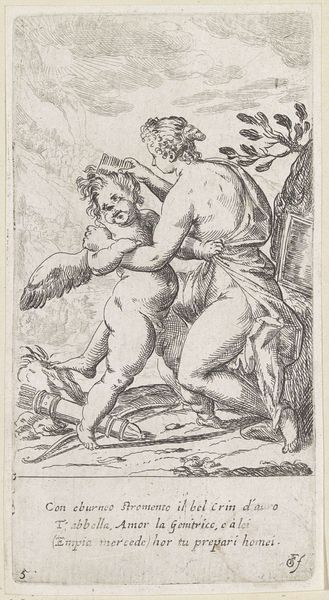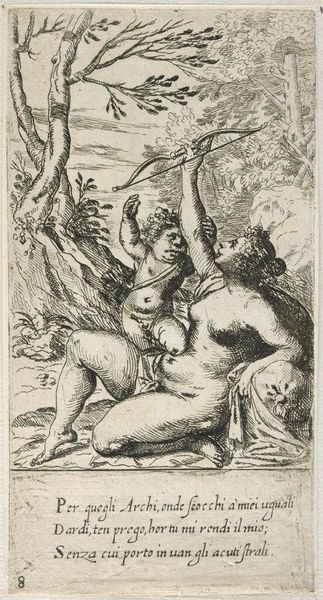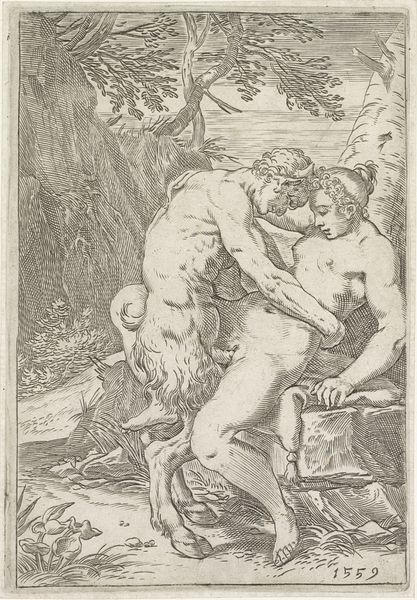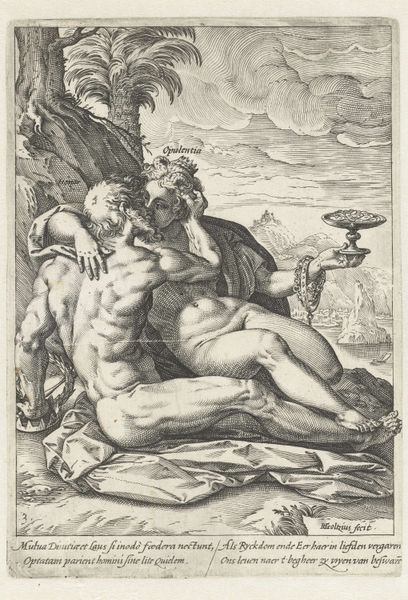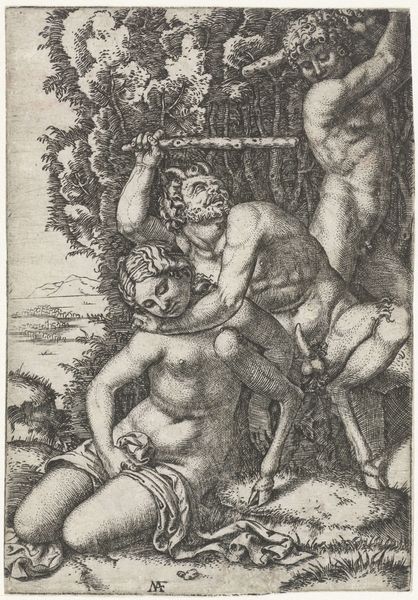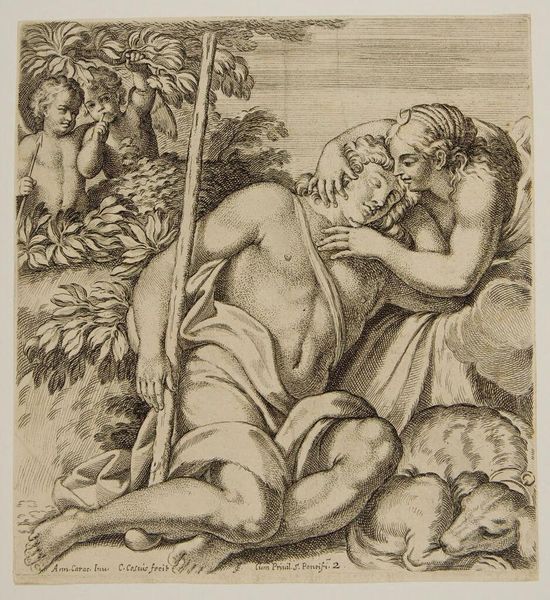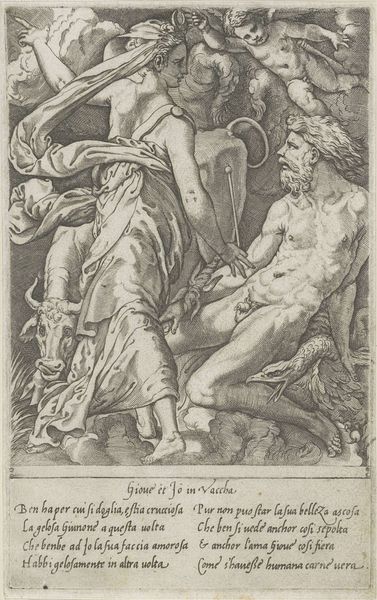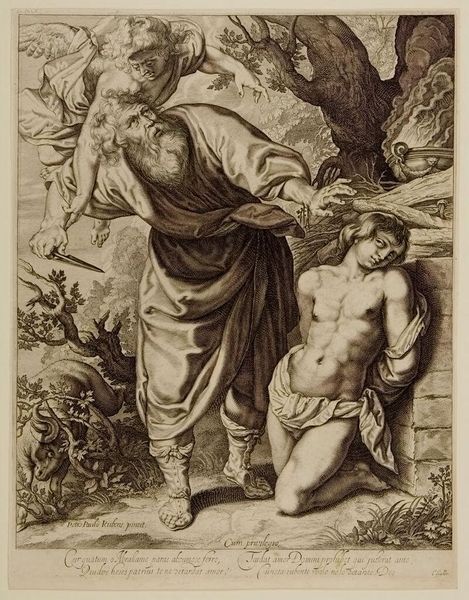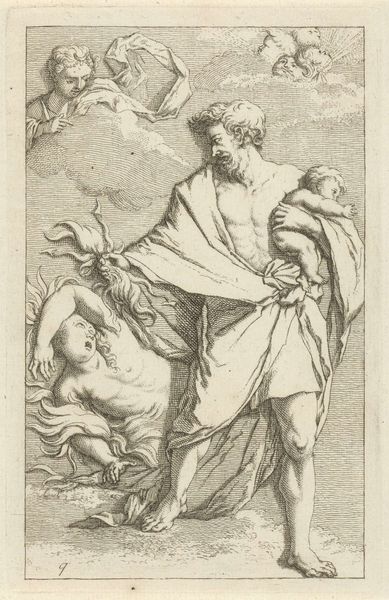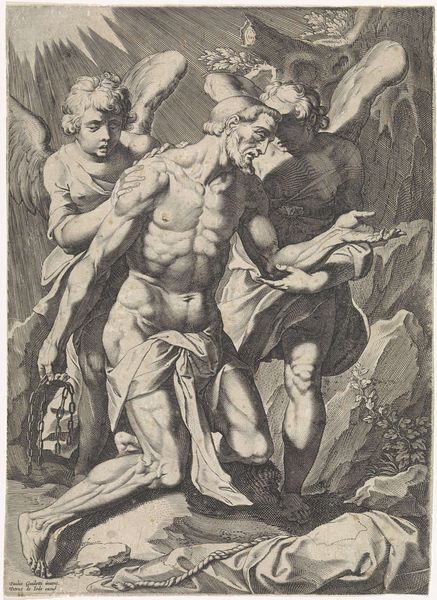
Dimensions: 17.7 x 19.2 cm (6 15/16 x 7 9/16 in.)
Copyright: CC0 1.0
Curator: Odoardo Fialetti's "Venus Combing Amor's Hair," presents a fascinating look at the material culture surrounding beauty in the early 17th century, doesn't it? The etching process itself, the tools used, speak to a specific moment. Editor: Oh, absolutely. My first thought was how raw and immediate it feels. Venus looks almost annoyed, and poor Amor seems to be squirming. There's a real sense of... domestic tension. Curator: The etching allows for that kind of detail – notice how Fialetti renders the textures of the skin, the fabric draped around Venus. And consider the socio-economic implications: who could afford such objects, such depictions of leisure? Editor: Yes, but beyond that, isn't there a timeless quality to it? The struggle between a mother and child, even divine ones, feels so familiar. It's funny and touching all at once. Curator: Indeed. The printmaking process allowed for wider distribution, making such themes accessible to a broader audience than, say, a unique painting. It democratized the image, in a way. Editor: I see your point. And yet, for me, it's the emotional narrative that resonates most. It hints at the messy, complicated reality of love, not just the idealized version. It feels very human. Curator: Precisely. And by understanding the material conditions of its production, we gain a deeper appreciation for the image's historical and social significance. Editor: I suppose we come at it from different angles, but in the end, we both find something compelling in this little etching. A glimpse into history, yes, but also into ourselves.
Comments
No comments
Be the first to comment and join the conversation on the ultimate creative platform.
